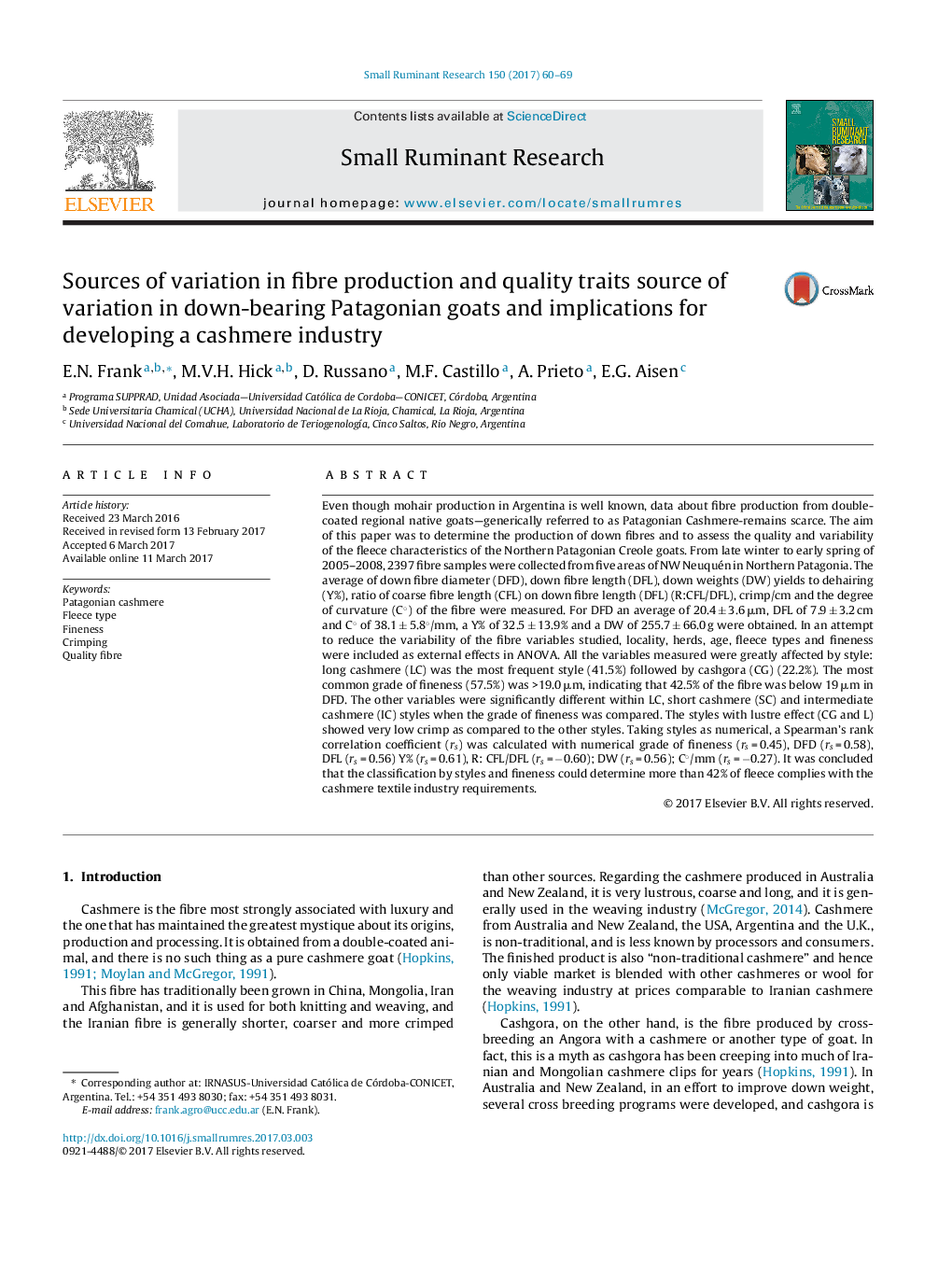| کد مقاله | کد نشریه | سال انتشار | مقاله انگلیسی | نسخه تمام متن |
|---|---|---|---|---|
| 5544170 | 1554342 | 2017 | 10 صفحه PDF | دانلود رایگان |
عنوان انگلیسی مقاله ISI
Sources of variation in fibre production and quality traits source of variation in down-bearing Patagonian goats and implications for developing a cashmere industry
ترجمه فارسی عنوان
منابع تنوع در تولید فیبر و صفات کیفیت منبع تغییرات در بز های پاتاگونانی پایین و پیامدهای توسعه یک صنعت قیر ام
دانلود مقاله + سفارش ترجمه
دانلود مقاله ISI انگلیسی
رایگان برای ایرانیان
کلمات کلیدی
موضوعات مرتبط
علوم زیستی و بیوفناوری
علوم کشاورزی و بیولوژیک
علوم دامی و جانورشناسی
چکیده انگلیسی
Even though mohair production in Argentina is well known, data about fibre production from double-coated regional native goats-generically referred to as Patagonian Cashmere-remains scarce. The aim of this paper was to determine the production of down fibres and to assess the quality and variability of the fleece characteristics of the Northern Patagonian Creole goats. From late winter to early spring of 2005-2008, 2397 fibre samples were collected from five areas of NW Neuquén in Northern Patagonia. The average of down fibre diameter (DFD), down fibre length (DFL), down weights (DW) yields to dehairing (Y%), ratio of coarse fibre length (CFL) on down fibre length (DFL) (R:CFL/DFL), crimp/cm and the degree of curvature (C°) of the fibre were measured. For DFD an average of 20.4 ± 3.6 μm, DFL of 7.9 ± 3.2 cm and C° of 38.1 ± 5.8°/mm, a Y% of 32.5 ± 13.9% and a DW of 255.7 ± 66.0 g were obtained. In an attempt to reduce the variability of the fibre variables studied, locality, herds, age, fleece types and fineness were included as external effects in ANOVA. All the variables measured were greatly affected by style: long cashmere (LC) was the most frequent style (41.5%) followed by cashgora (CG) (22.2%). The most common grade of fineness (57.5%) was >19.0 μm, indicating that 42.5% of the fibre was below 19 μm in DFD. The other variables were significantly different within LC, short cashmere (SC) and intermediate cashmere (IC) styles when the grade of fineness was compared. The styles with lustre effect (CG and L) showed very low crimp as compared to the other styles. Taking styles as numerical, a Spearman's rank correlation coefficient (rs) was calculated with numerical grade of fineness (rs = 0.45), DFD (rs = 0.58), DFL (rs = 0.56) Y% (rs = 0.61), R: CFL/DFL (rs = â0.60); DW (rs = 0.56); C°/mm (rs = â0.27). It was concluded that the classification by styles and fineness could determine more than 42% of fleece complies with the cashmere textile industry requirements.
ناشر
Database: Elsevier - ScienceDirect (ساینس دایرکت)
Journal: Small Ruminant Research - Volume 150, May 2017, Pages 60-69
Journal: Small Ruminant Research - Volume 150, May 2017, Pages 60-69
نویسندگان
E.N. Frank, M.V.H. Hick, D. Russano, M.F. Castillo, A. Prieto, E.G. Aisen,
